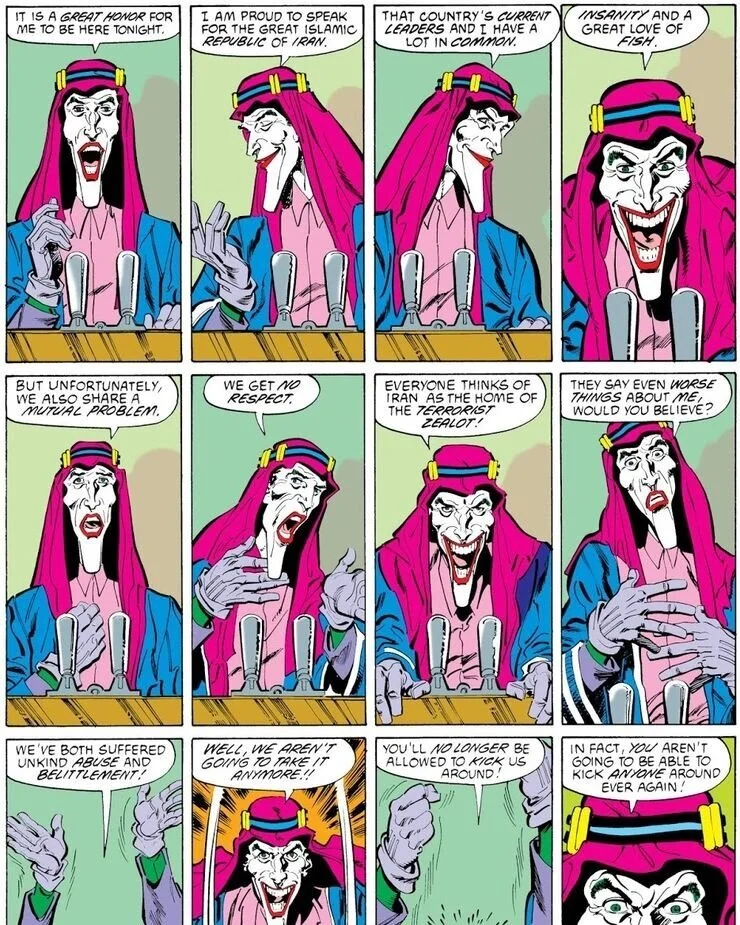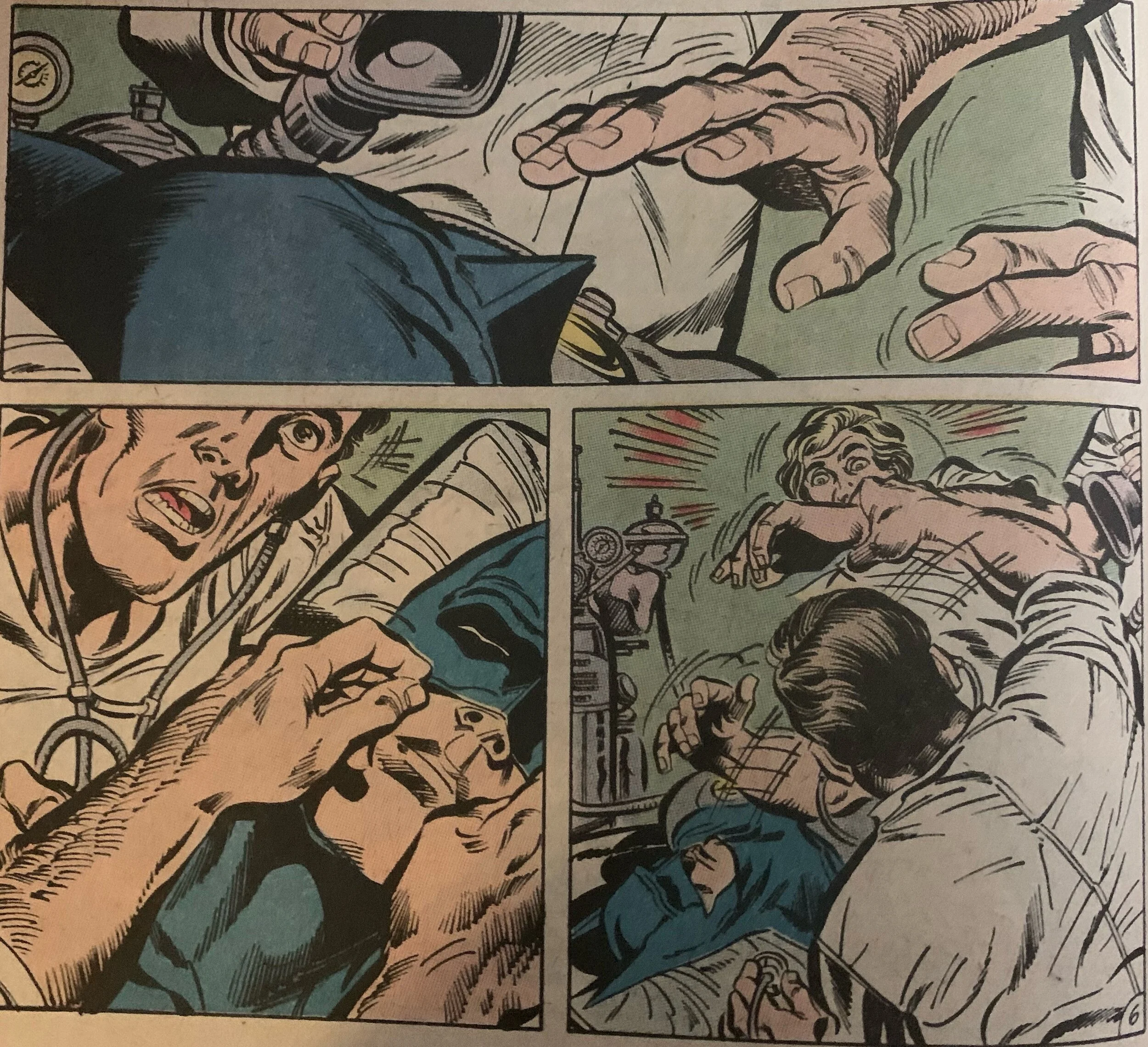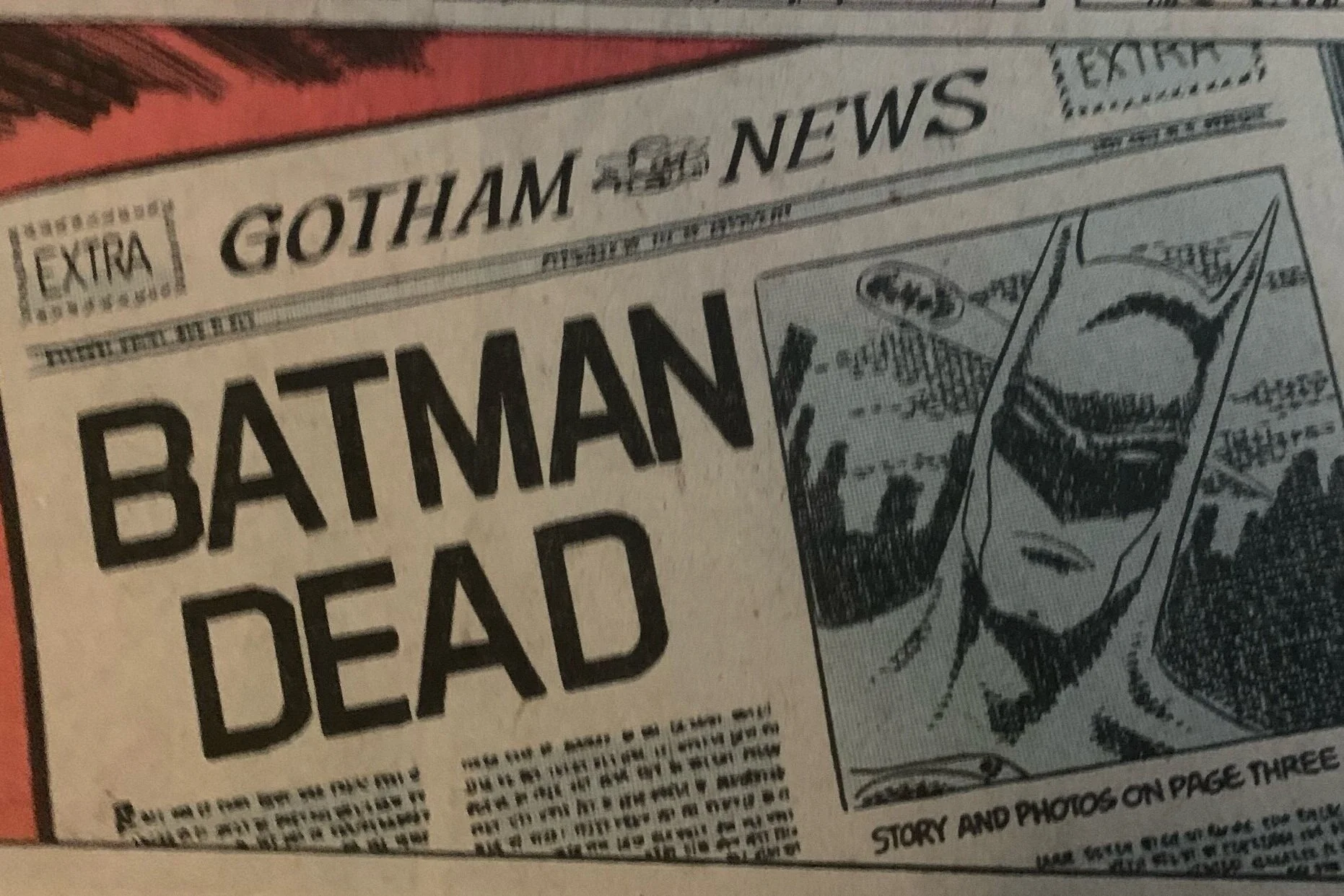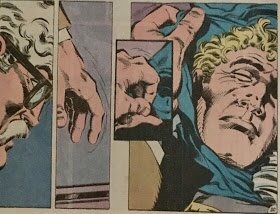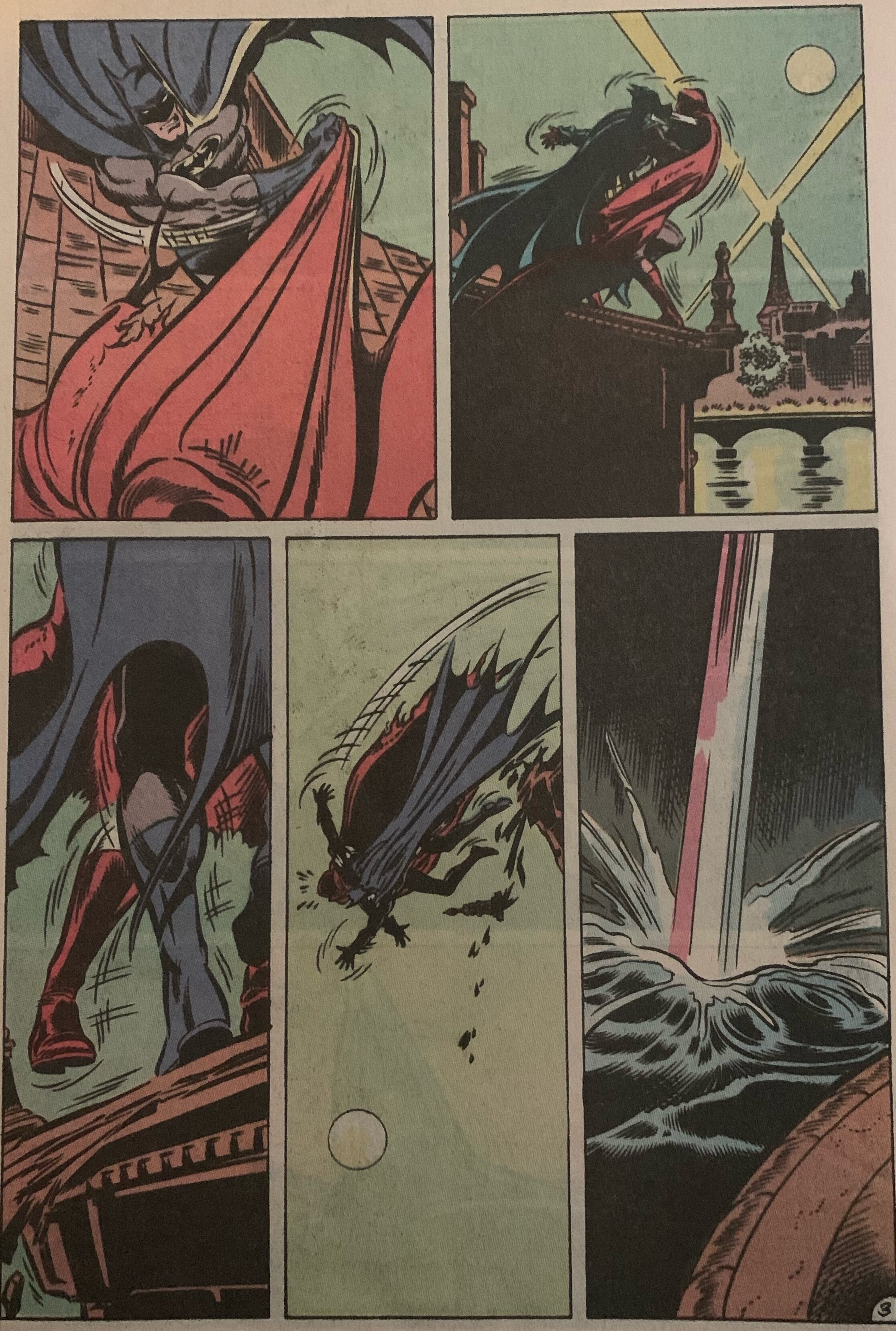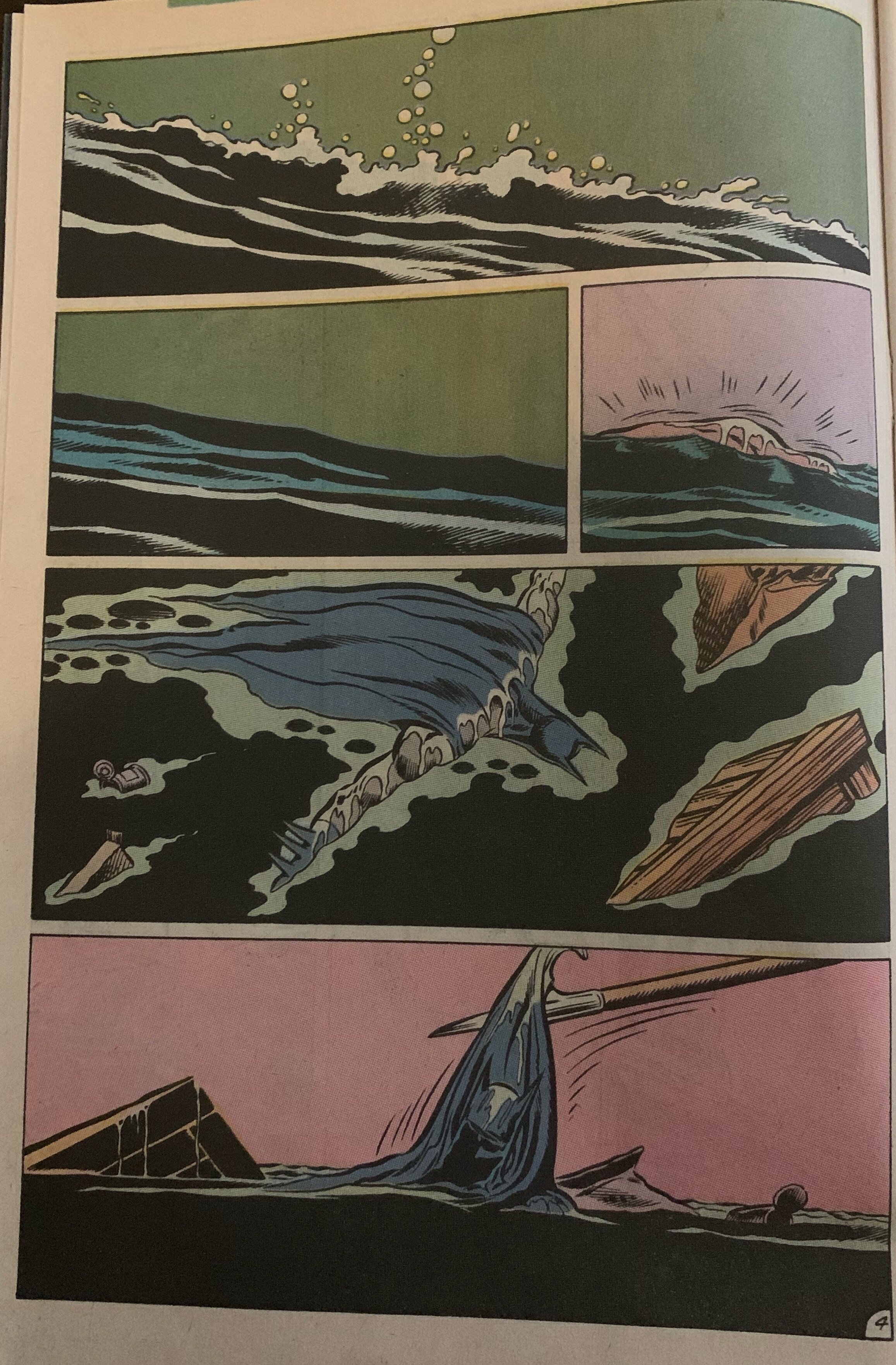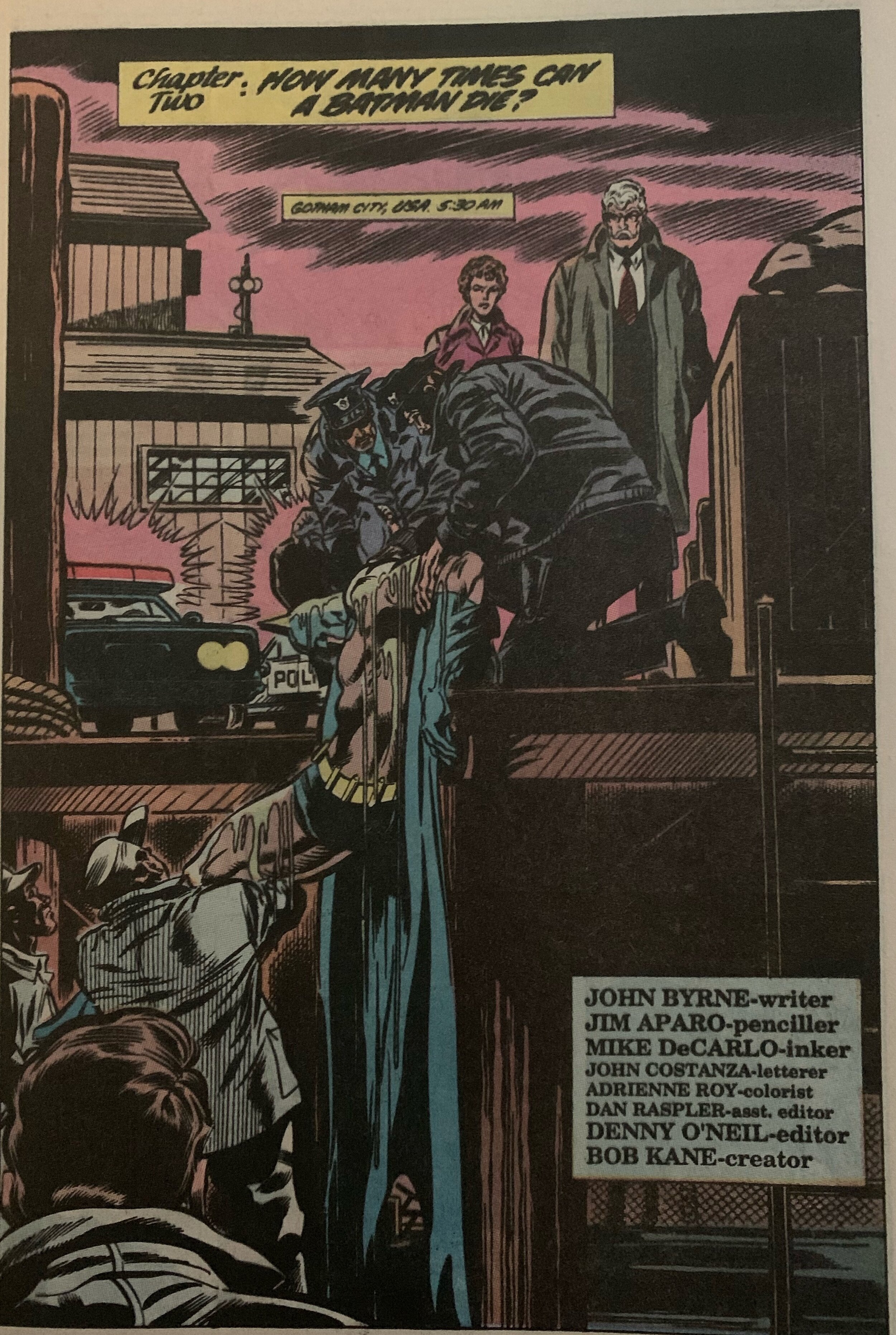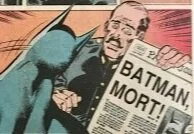“The Many Deaths Of Batman” (1989)
It’s safe to say that Batman is my favorite comic book superhero. I love Spider-Man, Blue Beetle (Ted Kord), Dazzler (the whole Outback X-Men roster, really), Moon Knight, and more! But Batman is probably my favorite because of his inherent characteristics and the character’s versatility.
Despite the “Batman’s superpower is his wealth” joke that’s popped up in many places (including both versions of JUSTICE LEAGUE), if Bruce Wayne has a superpower it is his will. Yes, dorks; that’s usually the domain of Green Lantern, but it’s through will alone that Wayne has sought out and mastered so many abilities, including detective skills, scientific knowledge, different fighting styles, psychology, and more. He also shows great will in never giving in to killing his opponents—he’s created a line he cannot cross, in the hopes that it redeems him by believing people can change as he changed due to just one interaction (spoiler alert: his parents were murdered; it’s a little known but pivotal event that should be covered more often in movies, TV, and books). So on top of his discipline, that robs him of sleep and forces him to constantly expand his skillsets, his will is what stops him from going the easy way out and snapping The Penguin’s neck like a twig.
BATMAN SAID TRANS RIGHTS ARE HUMAN RIGHTS 🥺😭🏳️⚧ pic.twitter.com/sHnIwheLQq
— Ashley💖|TheBatFamily 🦇 (@TheBat_Family) February 9, 2021
The other half of why I love Batman so much is that he can fit in to any story. True, every superhero that’s been around for longer than a decade has probably been put into every situation and genre configuration; but with some it’s more of a stretch. Superman could solve mysteries and take on street level punks (and kinda did when he busted up the KKK on his radio show and in real life), but it seems like a lot of firepower let loose in a relatively minor way. Green Lantern could spend his time chasing down demons, ghouls, and/or goblins—but it’s weird to see a cosmic powered space cop confronting the supernatural as a genre hybrid between horror and sci-fi. Wonder Woman’s regal status and warrior nature would be pretty undercut by a campy bit of joking and shenanigans. And yet, Batman is able to fit into all of these types of stories and it makes sense. He’s a Batman for all seasons!
That of course makes it all the more tragic that he died in 1989’s Batman #433.
I don’t recall where I first heard of the three-issue storyline “The Many Deaths Of Batman”…but I was intrigued. Again, because the caped crusader could be in a pulp noir, supernatural domain, or whatever else—the possibilities were endless. Well, mostly endless. The arc, published from May to July 1989, followed two important events in the DC world. First, was 1985’s Crisis On Infinite Earths, which essentially marked the end of the Silver Age of comics (where Superman could shoot a tinier version of Superman out of his hand, or there alternative worlds where Batman married Catwoman) and, for the time being, eliminated multiple earths. So this wasn’t a superhero precursor to 2001’s THE ONE.
The other important event happened just four months prior in the “Death In The Family” storyline where, thanks to a phone-in voting system, readers decided that the latest Robin, Jason Todd, should die. Which he did when The Joker beat him with a crowbar and then blew him up in a real Poochie-like demise. (Jason eventually got better. They all get better.) But this grim narrative turn pushed Batman into darker territory that had begun with the one-two punch of Frank Miller’s The Dark Knight Returns and Batman: Year One. These two factors introduced a bit more danger into the mix because it’s not like someone was traipsing across the multiverse to slaughter Batmen, it was happening in the “real” Gotham; and with stakes being both high (the aforementioned beating to death of a teenager) and a bit wonky (that same “Death In The Family” storyline has Joker become the ambassador to the UN for Iran), who knows where it would go?
Thus I was intrigued and picked up 1989’s Batman #433-435. Written by John Byrne, penciled by Jim Aparo, and inked by Mike DeCarlo, a pretty incredible team-up of talent working around the peak years of their abilities. For many comic book fans, even those that didn’t come of age in the mid-to-late ‘80s, Aparo’s version is Batman. The proportions (particularly of the ears—why is that the true testament to Batman’s costume design?), incredibly expressive face (even in the mask), a costume that was both brightly colored by invoked the night. He looks amazing. He also isn’t in issue 433 at all.
Batman #433 is an almost dialgoue-free comic book (with just two words at the very end, that Byrne would’ve left out had he known Aparo was handling art duties) that essentially follows the discovery of a crime and its ramifications in Gotham and beyond. The police arrive at a scene to discover Batman beaten and crucified to a fence in alleyway. They rush him to the hospital where he is eventually pronounced dead. There is a great moment where one of the physicians goes to lift the mask to see who is underneath, but the attending stops him; just that little bit of reverence for Gotham’s protector.
After being pronounced dead, a smarmy journalist (you can tell he’s smarmy because he wears all plaid and is constantly smirking under his fedora) bribes his way in to the morgue to take a photo and break the story of the Dark Knight’s demise. The story hits the paper…and is on page three for some reason? What is bumping the death of the most famous of Gotham citizens?
The comic then checks in with reactions of many in Wayne’s life including The Penguin, Two-Face, Dick Grayson (former Robin), and faithful butler Alfred, who is heartbroken (cue the scene from THE DARK KNIGHT RISES where they make poor old Michael Caine weep at a grave—seriously, Batman is a dick in those films).
The issue then concludes with Jim Gordon going to the morgue, asking for the room to himself (the only piece of dialogue in the whole issue), and then finding a shocking discovery (well, shocking to readers anyways who knows which face to expect underneath the cowl).
At this point, I assumed the plot would be about wannabe Batman vigilantes, various folks that dress up and want to be like Batman (similar to the “hockey pads” posers from THE DARK KNIGHT). Issue #434 opens up with what may be a flashback (or maybe one of those cosplaying heroes being more successful), finding a Batman pursuing some costumed character across the rooftops before plunging into the water. Then there’s a transition page of being in the water, before the third page reveals Gotham PD fishing someone in a Batman outfit out of a river. It’s a nice juxtaposition of images that maintains the mystery and leaves the reader uncertain what’s next.
Meanwhile, in France, it turns out that everyone’s favorite playboy/badass is alive and quite surprised to learn that his demise has been widely exaggerated (and hopefully not relegated to page three).
Meanwhile, in Gotham, the body count of fake Batmen is now at four. There aren’t a lot of connections between the victims, except that they are all masters in their field (stock car racing, demolition, chemistry, and bodybuilding) who were in their prime about seven-eight years ago.
Gordon has been joined by an unnamed coroner who aspires to be Gotham’s Quincy. The latest murder involves a (former) world class gymnast, killed by a poisoned arrow from a crossbow. And a master archer just happens to be in Gotham too! Gordon and the pathologist show up to discover this crossbow enthusiast dressed as Batman, having been given the costume by Bruce Wayne. While the GCPD reps discuss what this all means, the sharpshooter dies a terrible death as the costume is laced with poison.
While Bruce is a suspect, he begins to figure out the links between these victims. They are all from out of town who just happen to be in Gotham, were lured by lies and money, and, of greatest interest, they were all specialists that Bruce trained with to become Batman.
Bruce is hampered by the GCPD staking out his mansion and placing him under house arrest, but manages to sneak out and track down the killer, who is in the midst of trying to kill again. That seems to happen with Batman a lot—he gets the drop on criminals committing yet another illegal activity, thereby implicating them further.
The resolution is convoluted and I’ve skipped over various red herrings, dead ends, a hooker who almost sleeps with a fat guy dressed like Batman, and more victims, but the motive behind the murders isn’t the worst. In previous issues, Ra’s al Ghul had deduced Batman’s secret identity by following the money and looking for specific trails that someone with Batman’s capabilities and equipment would require. One of those highly skilled tutors from Bruce’s past is paranoid that someone else will connect the threads again, which makes him a target. That’s a pretty clever incentive that one of these people, who are masters at various crafts and use those specific set of skills, would see the writing on the wall and do whatever he can to avoid any sort of repercussions for being associated with Batman. When one has dedicated their life to perfecting an ability, it probably presents a great concern that some element of life is no longer in their control.
“The Many Deaths Of Batman” is two-thirds a good story. The mostly dialogue free first part is brilliant by setting up a terrific mystery, selling the emotional fallout of the apparent act, and showcasing Byrne’s scripting matched with Aparo’s art.
The second installment is a bit of a step down, only because it’s not as technically adventurous as the previous one, but it’s a great precursor to books like Gotham Central, where the issue is almost entirely made up of the city’s police tracking to crack a case that is bizarre and could potentially expose Gotham to even more danger should their protector truly die.
Unfortunately the final piece, issue #435, is bulky as it basically has to actually introduce the real linkage, establish the villain as a character, and solve the mystery. Interestingly enough, it’s also the entry with the most Batman and most dialogue.
The three-part storyline is fascinating and could make for a fairly good feature film or short, allowing for lots of moody visuals with very little superhero trappings. The plot would have to be streamlined so the reveal isn’t so rushed (or underwhelming), but it could definitely work. It’s not great, but it is worth reading Batman #433-435, “The Many Deaths Of Batman”.
You can get “The Many Deaths Of Batman” as a (mostly out of print) trade paperback, singles on eBay, and ebooks via Comixology.






